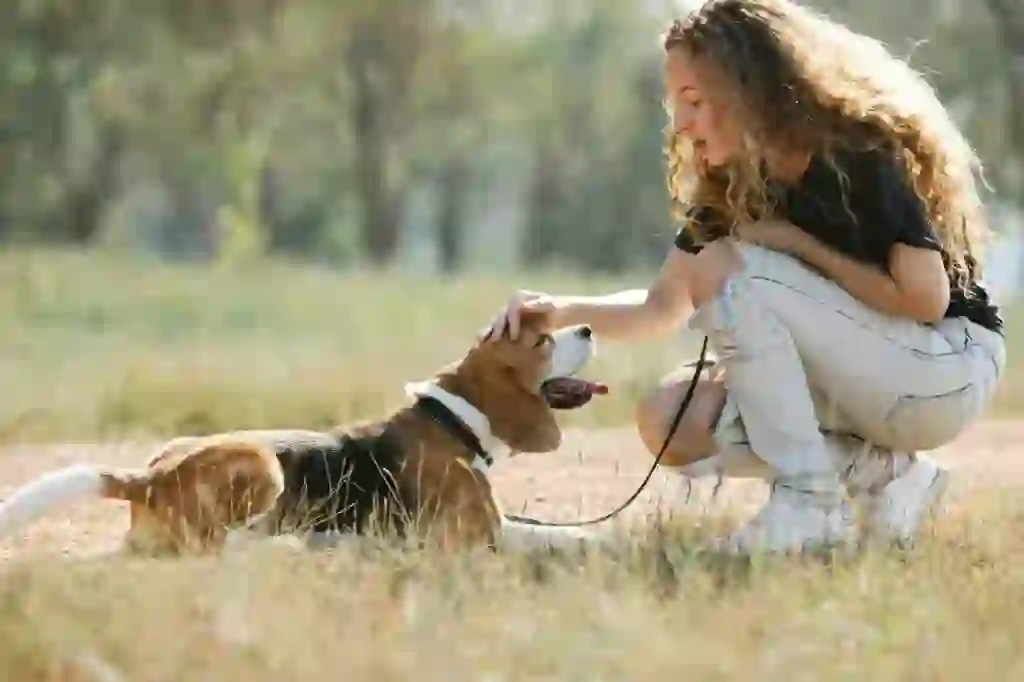
Beagle
Beagle
Beagle
The Beagle dog breed served as the model for the comic character Snoopy. Mischievous and curious with droopy ears and a penchant for cuddling, the Beagle is also popular as a family pet. The sight of a Beagle sniffing around with its ears flapping as it runs is charmingly endearing! While Beagles are beloved as family pets today, they have historically been used as hunting dogs. Let's delve into the fascinating world of the Beagle.
Beagle Basic Infomation

Country of origin: United Kingdom Size: Ideal height 33cm to 40cm, Weight 7kg to 12kg Dog breed group: 6G: Scent Hounds * Dogs with a large bark and excellent sense of smell, used for hunting animals by scent. The smallest breed among hounds.
The origins of the Beagle are not entirely clear, but it is thought that the ancient Greyhound from Egypt is its ancestor. Greek documents from around 400 BC mention dogs skilled in rabbit hunting, believed to be ancestors of the Beagle.
The ancestors of the Beagle spread across Europe, reaching Britain, where breed refinement progressed during the reigns of Henry VII to Elizabeth I. During Elizabeth I's time, there were two sizes of this type of hound; the smaller ones, referred to as Beagles (derived from the French word for 'small'), were used for rabbit hunting. The Beagle was officially registered as a breed in Britain in 1890.
In the United States, Beagles began to be imported around 1860 and were recognized by the AKC (American Kennel Club) in 1885. Traditionally bred for rabbit hunting, today, Beagles are popular as show dogs and pets. They also work as 'quarantine detection dogs' at airports due to their remarkable sense of smell and serve as companion dogs.
Beagles have a cheerful and friendly nature. They are affectionate with their owners and families, getting along well with other people and dogs due to their gentle temperament. As hunting dogs, they are lively, bold, endowed with stamina, and decisive.
Being scent hounds, Beagles have an acute sense of smell and love to sniff. Hunting in packs, they would signal each other's location by barking, cornering the prey together, hence their resonant bark, which has earned them the moniker 'the voice of the forest.' Additionally, because Beagles are 'prolific, easy to breed, genetically stable with little variation, have a gentle nature, and are voracious eaters,' they have also been used as medical research animals.
The Beagle's coat is a double coat consisting of a short, fluffy undercoat and a glossy overcoat. The JKC recognizes Beagle coat colors as 'hound colors, except liver, with a white tail tip,' primarily divided into the following three:
Beagle Q&A

Ancestors and History of the Beagle Dog
The origins of the Beagle are unclear, but it's thought that the ancient Greyhound from Egypt is its ancestor. Greek documents from around 400 BC mention dogs adept at rabbit hunting, considered to be ancestors of the Beagle.
The Beagle's ancestors spread throughout Europe, eventually reaching Britain, where the breed was refined during the reigns of Henry VII to Elizabeth I. During Elizabeth I's time, there were two sizes of this type of hound; the smaller ones, referred to as Beagles (from the French word meaning 'small'), were used for rabbit hunting. The Beagle was officially registered as a breed in Britain in 1890.
In America, Beagles began to be imported around 1860 and were recognized by the AKC (American Kennel Club) in 1885. Originally bred for rabbit hunting, Beagles are now popular as show dogs and pets. They are also employed as 'quarantine detection dogs' at airports due to their excellent sense of smell and serve as companion dogs.

What Kind of Temperament Does a Beagle Have?
Beagles are cheerful and friendly. They are affectionate with their owners and families, and can get along well with other people and dogs due to their calm temperament. As hunting dogs, they are spirited, bold, have plenty of stamina, and are decisive.

Characteristics of Beagles
As scent hounds, Beagles have a keen sense of smell and love sniffing around. Beagle hunting involves packs, signaling each other's location by barking and cornering prey together, hence their resonant bark, which has earned them the nickname 'the voice of the forest.' Additionally, because Beagles are 'prolific, easy to breed, genetically stable with little variation, have a gentle nature, and are voracious eaters,' they have also been used as medical research animals.

Beagle Coat Colors
The Beagle's coat is a double coat with a short, fluffy undercoat and a glossy overcoat. The JKC allows Beagle coat colors 'hound colors, except liver, with a white tail tip,' mainly divided into the following three:
Red & White Comprises reddish-brown and white.
Lemon & White (Lemon Color) The brown parts are lighter and brighter than in Red & White. The noses of hound-colored Beagles are black, but those of Lemon & White Beagles can be liver-colored to pink.

Q. What is the Origin of the Beagle's Name?
The name 'Beagle' is thought to derive from the old French 'begueule,' meaning 'open throat' or 'loudmouth,' or from the Gaelic 'beag,' meaning 'small.' Gaelic is part of the Indo-European language family, belonging to the Celtic group.

Q. Why Does the Beagle Have a White Tail?
The Beagle's tail is usually upright, with a slightly curved tip that is white. This is a result of selective breeding to make them easily identifiable in tall grass during rabbit hunts.

Q. Common Behavioral Problems in Beagles and Tips for Management
What may be normal behavior for a dog, due to its instincts or breed characteristics, can sometimes pose challenges when keeping them as pets. Common behavioral issues in Beagles include pulling on the leash and unnecessary barking due to their 'sniffing adventures.' For 'pulling,' effective management involves fulfilling their instinct to sniff through scent games like 'Nosework,' which also helps with stress relief, concentration improvement, combating lack of exercise, and preventing cognitive decline.
For 'unnecessary barking,' Beagles, being hunting dogs, are naturally inclined to bark. Training during the puppy stage, particularly between 3 and 12 weeks during the 'socialization period,' to establish a pack hierarchy is crucial. Ignoring unwanted behaviors and rewarding desired actions consistently among all family members is important.
Reducing the stimuli that trigger barking is also a strategy. For instance, if lack of exercise and resulting stress is the cause, more physical activity is needed. If barking is for attention or food, it's essential not to give in to their demands. Otherwise, they learn that barking yields rewards, and the behavior continues.
Beagles often react and bark at stimuli such as birds or moving trees seen from windows. In such cases, applying window films to reduce these visual stimuli can be effective.

Q. How to Care for a Beagle
Due to their high sebum production, Beagles can have a noticeable odor. Regular shampooing and a balanced diet can help mitigate this.
If the odor isn't a concern, shampooing once or twice a month is sufficient. It's also important to moisturize their skin to prevent dryness. Daily teeth cleaning is necessary to prevent tartar build-up.
Though Beagles have short hair, their double coat requires daily brushing. Leftover fur can cause skin diseases, so use a soft rubber brush for gentle brushing.
Care for droopy ears is crucial in breeds like Beagles, as their ear shape can trap moisture inside, leading to ear problems. Cleaning the outer part of the ears with a soft cotton wrapped around a finger once or twice a week is recommended. Avoid deep ear cleaning and consult a vet if necessary.

Q. Diseases to Be Aware of in Beagles
Beagles love to eat, which can lead to obesity and associated risks like diabetes and intervertebral disc disease.
Cataracts are a concern in older dogs, causing cloudiness and visibility issues.
Regular checks for mammary tumors in female dogs are also important. Be cautious of lumps in the breast area and consult a vet promptly.
During summer, be wary of heatstroke. Avoid walking on hot asphalt during the day. Hot surfaces can burn their paws, and the risk of heatstroke increases. Opt for early morning or evening walks during hot weather.

Q. Foods to Avoid Feeding a Beagle
Avoid giving Beagles onions, leeks, garlic, avocados, octopus, squid, bamboo shoots, konnyaku, grapes, raisins, and nuts. Also, refrain from feeding them processed human food and sweets.

Q. What is the Lifespan of a Beagle?
The average lifespan of a Beagle is 12-15 years, which is relatively long for dog breeds. The average lifespan for domestic dogs in Japan is 14 years. To ensure a long life for Beagles, prevent obesity, ensure daily exercise, and do not skip annual health check-ups.

Would you like to become a part of the 'Animalbook.jp'?
Turn your knowledge into Q&A and share it with the world. ※Publication will be activated after purchase. Let's share information together!
Beagle Type of List

- Beagle
Information
Congratulations! You are the first commenter!

Create Your Favorite List!
Beagle
Save the animals you love! Build your own list to quickly revisit your favorites later.

Would you like to leave a comment?
※Please note: This is for the purchase of rights to post comments within the article.
Find Your Favorites!
Our shop offers a unique and attractive selection of goods themed around various animals.
Beagle References

- ウィキペディアビーグル - Wikipedia
- 一般社団法人 ジャパン ケネル クラブ https://www.jkc.or.jp/archives/dog_category/breed_10g
- 子犬の部屋 https://www.koinuno-heya.com/syurui/hagyou/beagle.html
- アクサダイレクト・犬好きのための犬図鑑 https://www.axa-direct.co.jp/pet/pet_dog/library/beagle.html
- みんなの犬図鑑 https://www.min-inuzukan.com/beagle.html
- わんちゃんホンポwanchan.jp/column/detail/29126
- ワールドドッグ図鑑 https://onl.bz/ageG9Q1
- ブリーダーナビ https://onl.bz/fjHWHGF
Beagle Introduction of media used

出典:https://unsplash.com/photos/YLK-u-wAN8w

出典:https://pixabay.com/images/id-3324612/

出典:https://pixabay.com/images/id-3804652/

出典:https://pixabay.com/images/id-6548817/

出典:https://pixabay.com/images/id-1796435/

出典:https://unsplash.com/photos/2l0CWTpcChI

出典:https://pixabay.com/images/id-164930/

出典:https://www.pexels.com/ja-jp/photo/11059899/

出典:https://pixabay.com/images/id-3877121/

出典:https://www.pexels.com/ja-jp/photo/452762/

出典:https://unsplash.com/photos/Bf2yJ99JMT0

出典:https://unsplash.com/photos/DFgaTssKzIM

出典:https://www.pexels.com/ja-jp/photo/7210758/

Help Enrich Our Animalbook.jp with Your Media!
We are constantly looking to expand and enrich our Animalbook.jp with amazing photos and videos of animals. If you have any media that you'd like to share, please contribute and help us showcase the beauty and diversity of the animal kingdom. Your submissions will be credited and featured in our encyclopedia, reaching a wide audience of animal lovers.


















